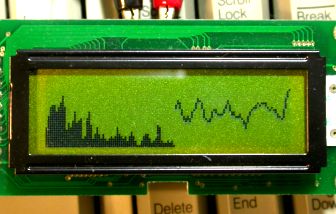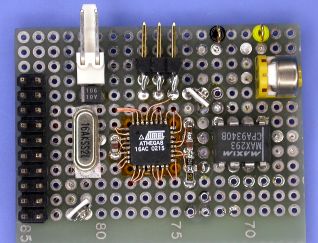Summary of Audio Spectrum Monitor using S1D15200 microcontroller
The article discusses the evaluation and use of the SG12232C small graphics LCD module, which features a 122x32 dot resolution with two Epson S1D15200 controllers. Originally bought without a clear application, the author experimented with displaying real-time audio waveforms and FFT spectrum analysis on the LCD, achieving good performance for a low-cost microcontroller setup. The module requires a 2 kHz square wave drive clock during operation, supports 8-bit bus interfaces (8080 or 6800), and needs at least 14 I/O lines. It is suitable for visualizing audio spectra and potentially radio frequency bands.
Parts used in the SG12232C Graphics LCD Evaluation:
- SG12232C Graphics LCD module
- Epson S1D15200 LCD controller (integrated on the module)
- Microcontroller (unspecified, used for driving and processing)
- 2 kHz square wave clock generator
This is an evaluation use of a small graphics LCD module. Last summer, SG12232C graphic LCD module has been sold sold for 1500 Yens from Akizuki Denshi and I bought it. However I could not find good application for the LCD module and it was going to go to junk box 🙂 so that I tried to use the LCD module temporary.
Only displaying any still image is not cool, first I tried to display an audio wave form in real-time like a digital oscilloscope, and then an FFT spectrum analysis too. The spectrum monitor seems to achived nice performance, in view of it is realized with a cheap microcontroller.
This can also be applied to radio frequency band.
Hardware
SG12232C is a full graphics type LCD module in resolution of 122(H) x 32(V) dots. It has two Epson S1D15200 LCD controller on a board. The S1D15200 can display up to 61(H) x 32(V) dots and they drive half of the LCD panel each. SG12232C requires a 2 kHz square wave as LCD drive clock and it must be supplied during power is on or the LCD panel may be damaged due to static bias. The bus interface can select 8080 based or 6800 based. There is no 4-bit mode like HD447880, only 8-bit mode is available and it requires 14 I/O lines at least.
For more detail: Audio Spectrum Monitor using S1D15200 microcontroller


